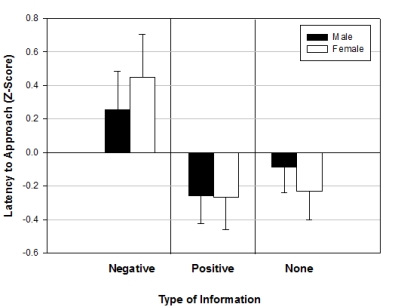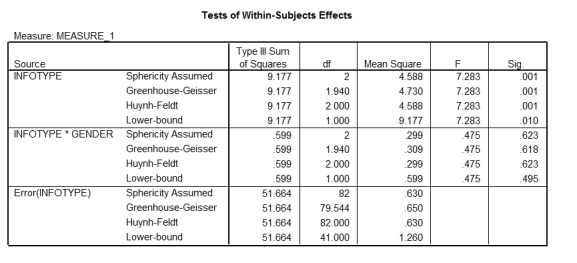Multiple Choice
Field and Lawson (2003) reported the effects of giving children aged 7-9 years positive,negative or no information about novel animals (Australian marsupials) .This variable was called 'Infotype'.The gender of the child was also examined.The outcome was the time taken for the children to put their hand in a box in which they believed either the positive,negative,or no information animal was housed (positive values = longer than average approach times,negative values = shorter than average approach times) .Based on the output below,what could you conclude? 


A) Approach times were significantly different for the boxes containing the different animals,and the pattern of results was affected by gender.
B) Approach times were not significantly different for the boxes containing the different animals,but the pattern of results was affected by gender.
C) Approach times were not significantly different for the boxes containing the different animals,but the pattern of results was unaffected by gender.
D) Approach times were significantly different for the boxes containing the different animals,but the pattern of results was unaffected by gender.
Correct Answer:

Verified
Correct Answer:
Verified
Q1: Mixed ANOVA:<br>A)Compares several means when there are
Q4: An experiment was done to compare the
Q5: An experiment was done to compare the
Q6: An experiment was done to compare the
Q7: Which of the following sentences is correct?<br>A)The
Q8: An experiment was conducted to see how
Q9: An experiment was conducted to see how
Q10: An experiment was done to compare
Q11: An experiment was done to compare the
Q11: An experiment was done to compare the